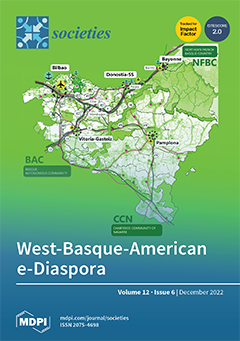Background: University students may be vulnerable to food insecurity (FI) due to limited financial resources, lower purchasing power, and increasing housing and food costs. This study aimed to assess the prevalence and severity of FI and its associated factors among university students attending
[...] Read more.
Background: University students may be vulnerable to food insecurity (FI) due to limited financial resources, lower purchasing power, and increasing housing and food costs. This study aimed to assess the prevalence and severity of FI and its associated factors among university students attending a public Portuguese university. Methods: A cross-sectional survey was designed, and data were collected using a self-reported online questionnaire validated for the Portuguese population. The study population included students from all levels of study and the assessments were conducted during the winter semester (December 2021 to February 2022). Chi-square tests were used to determine the associations between FI and sociodemographic variables. Bivariate logistic regression was further used to assess factors associated with FI. Results: From the 284 participants, 17.3% of students were classified as food insecure, consisting of 14.1% with mild FI, 2.1% with moderate FI, and 1.1% with severe FI. FI was significantly associated with nationality (
p = 0.028) and the number of unemployed household members (
p = 0.001). In comparison to Portuguese students, students of other nationalities were 4.1 times more likely to be food insecure (OR = 4.089, 95% CI:1.057–15.821,
p = 0.041). Students in households with a higher number of members (OR = 2.537, 95% CI:1.231–5.230,
p = 0.012) and a higher number of unemployed members (OR = 3.192, 95% CI:1.681–6.059,
p < 0.001) were also 2.5 and 3.1 times more likely, respectively, to be food insecure. Conclusions: This study provides an insight into the FI levels of university students in a Portuguese university. Further future studies are needed to use objective measures of food insecurity (availability, access, and utilization of food) and explore interventions addressing food insecurity in this population.
Full article





